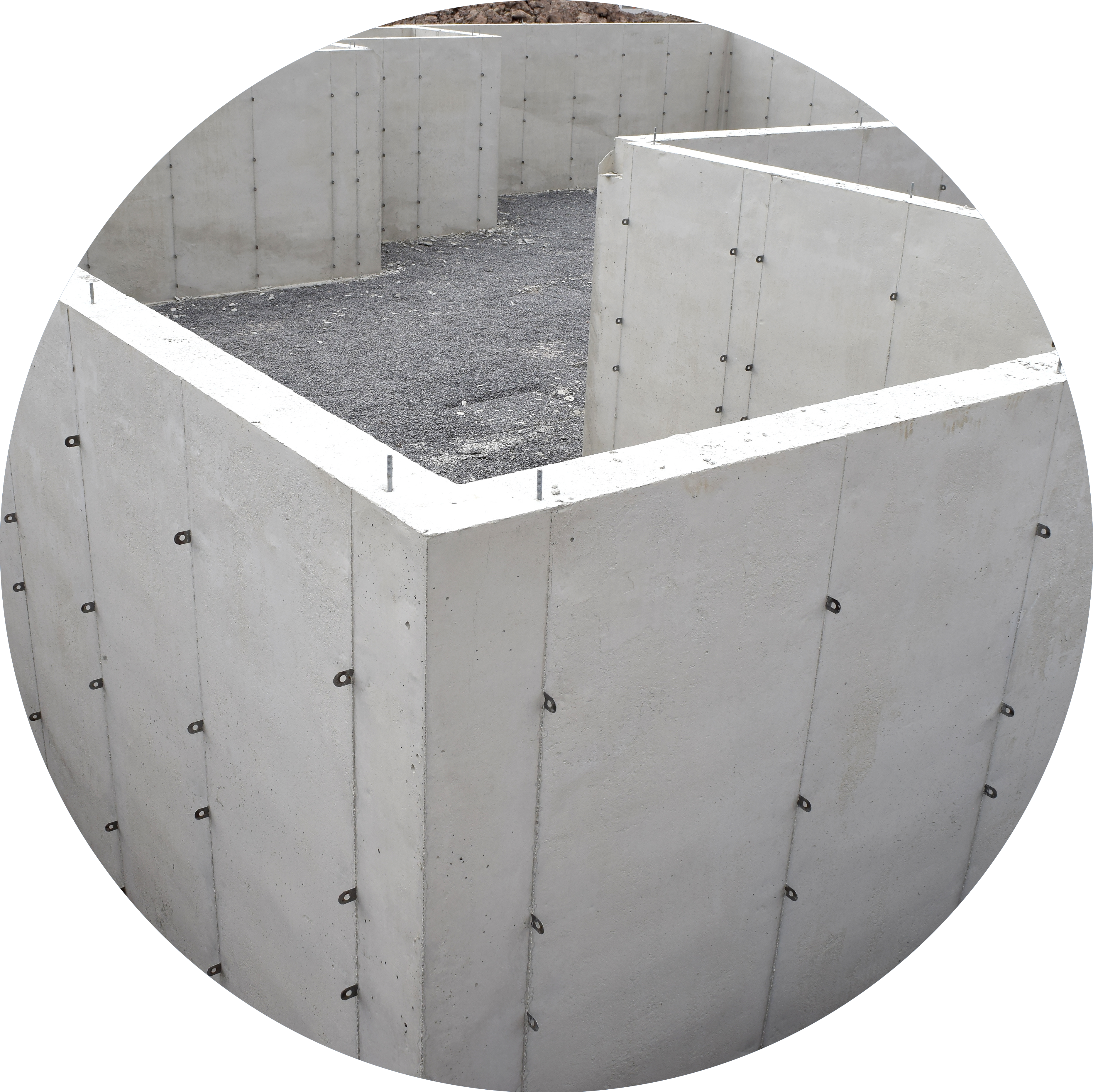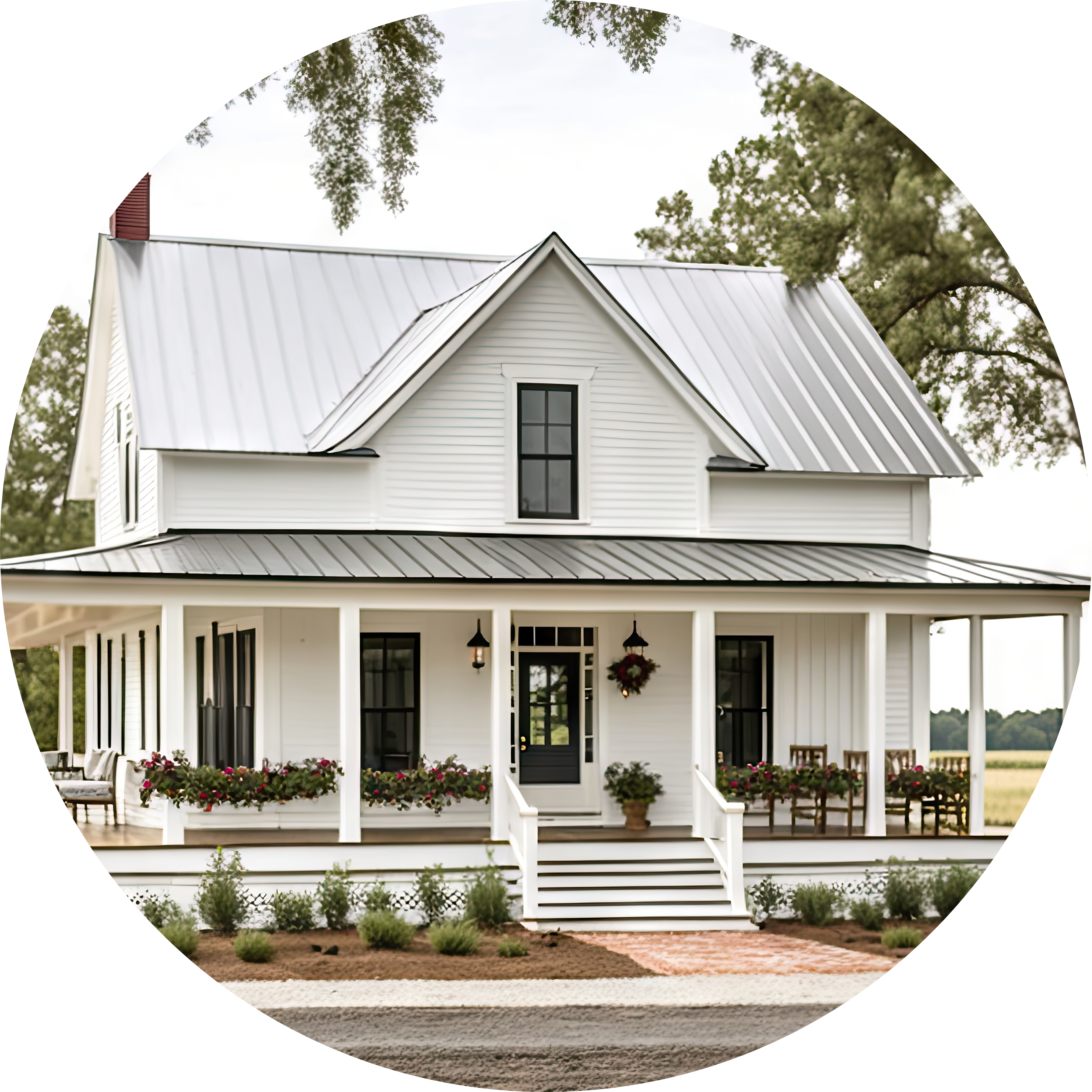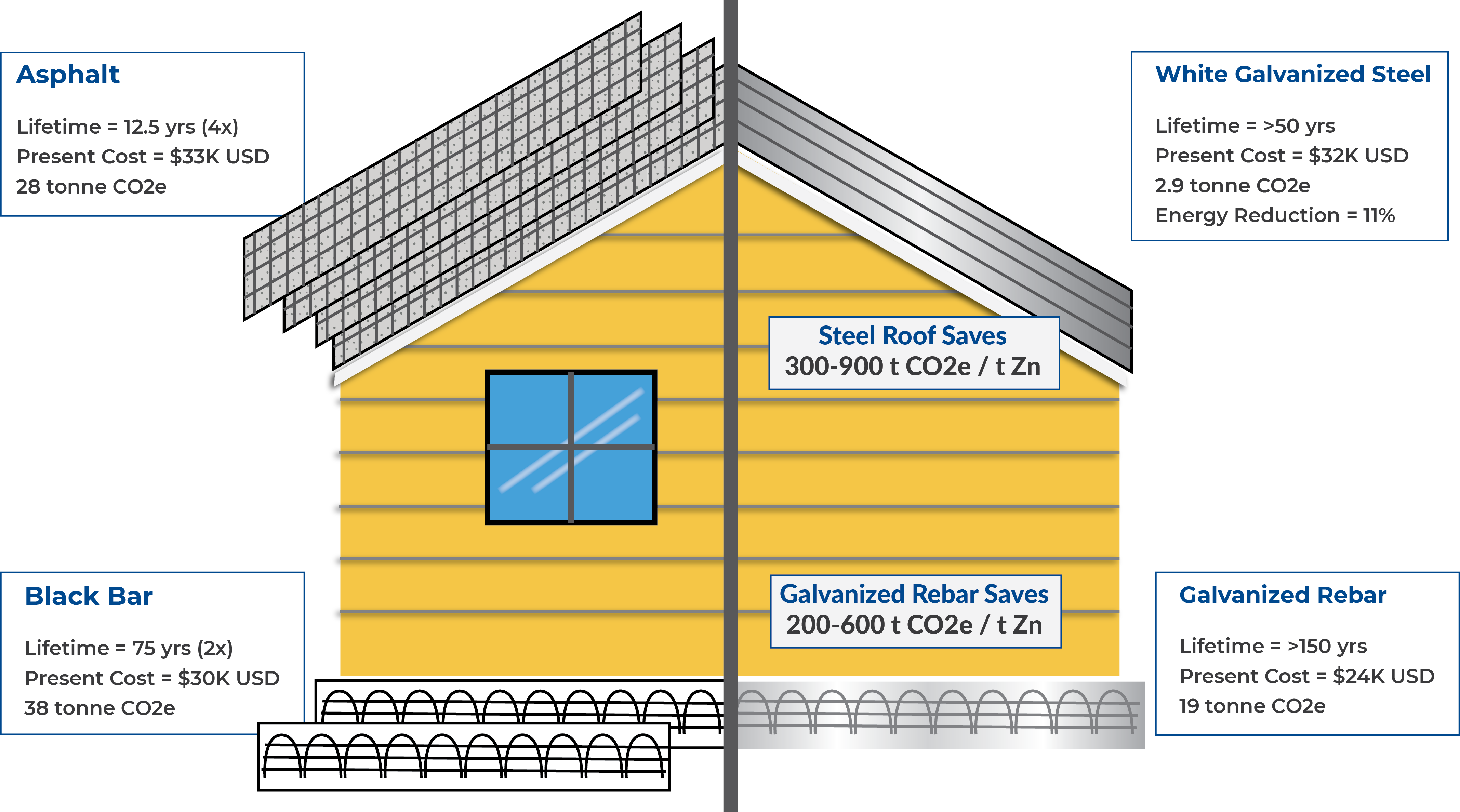Zinc Makes Homes Greener and More Sustainable
Building strong communities begins with building strong infrastructure designed to last for generations. From the foundation to the rooftop, zinc enables long-lasting, low-maintenance solutions that enhance a home’s durability and environmental performance.
Through the Zinc Enables Decarbonization (ZED) initiative, the advantages of zinc in residential housing are rigorously quantified and substantiated, making it a cornerstone in the journey toward a more resilient, low-carbon future.
Zinc's Value Proposition
Zinc is an obvious choice for enhancing durability and sustainability in construction. By protecting steel from corrosion, zinc significantly extends its lifespan, reducing maintenance and replacement costs. From strengthening foundations with galvanized steel rebar to long-lasting metal roofs, zinc ensures homes last longer, offering many decades of reliable performance and environmental benefits.

Using galvanized steel rebar to reinforce a foundation can extend its lifespan by 100 years without the need for maintenance

Years
A galvanized metal roof provides reliable protection for a home for 50 years or more
Value In Use
Building strong communities starts with creating durable shelters that stand the test of time. By protecting critical components like foundations and roofs from corrosion, zinc reduces the direct costs associated with maintenance and replacement, offering homeowners significant long-term savings. Moreover, its durability minimizes material waste and the environmental impacts of frequent repairs or replacements, contributing to lower carbon emissions and a reduced climate footprint. With zinc, homes become more resilient and provide safer, more reliable living spaces for generations to come, strengthening the foundation of thriving, sustainable communities.

United States Dollar
Net present Value in Use of average foundation using galvanized steel rebar

United States Dollar
Net present Value in Use of average roof made of galvanized metal
Direct Costs
Galvanized roofs and rebar in foundations deliver significant net present value for homeowners, making them an investment in both durability and financial well-being. By reducing the need for frequent repairs and replacements, these materials lower maintenance costs and extend the lifespan of homes, translating to substantial savings over generations. Additionally, the energy efficiency benefits of these zinc-based solutions contribute to long-term reductions in utility bills. White galvanized roofs, for example, enhance insulation and reflectivity, helping to regulate indoor temperatures and reduce heating and cooling costs. The white roofs have been documented to save lives in heat waves. Together, these advantages provide homeowners with a more cost-effective, low-maintenance living experience while also supporting sustainability and energy conservation.

United States Dollar
Net present value of lifetime cost savings of average foundation using galvanized steel rebar

United States Dollar
Net present value of lifetime energy savings of average roof using galvanized metal
Carbon Value

Carbon saved over lifetime of foundation using galvanized rebar

Carbon saved over lifetime of galvanized metal roof
Zinc's Role In Reducing Embodied Carbon
As the construction industry embraces a low-carbon future, zinc stands out as a key material in tackling embodied carbon. By protecting materials, reducing waste, and enhancing recyclability, zinc not only reduces carbon emissions but also ensures a more sustainable and resilient built environment.




